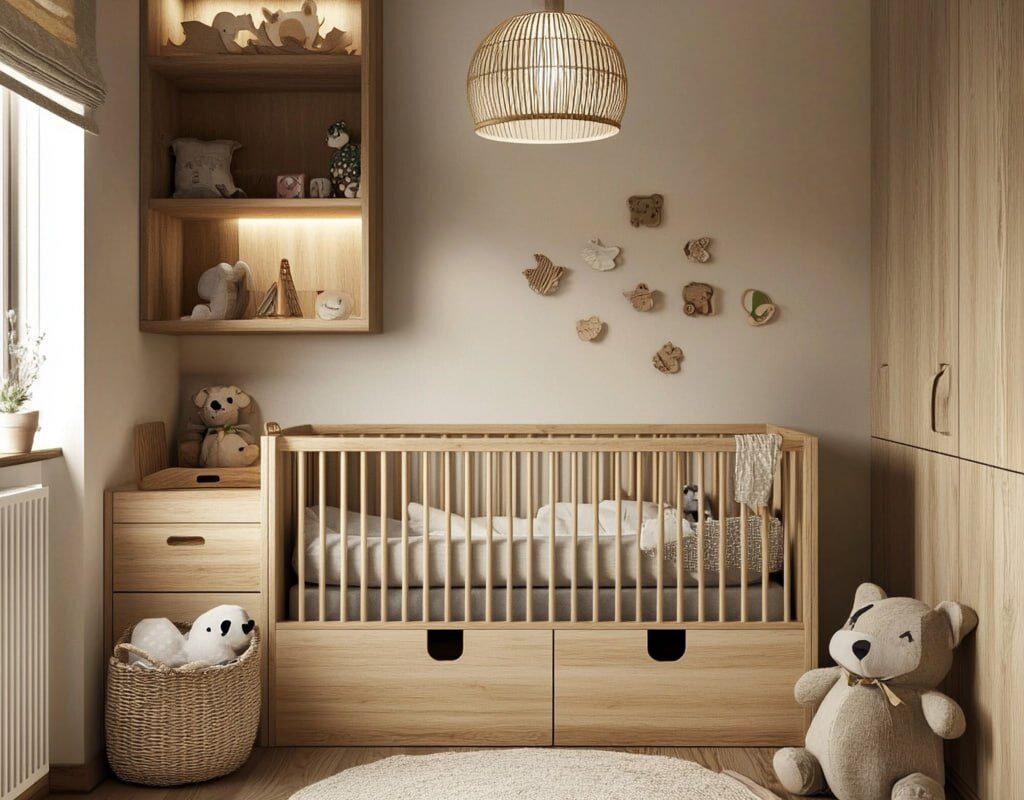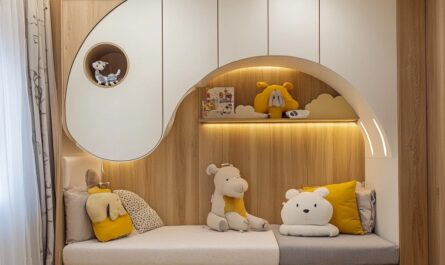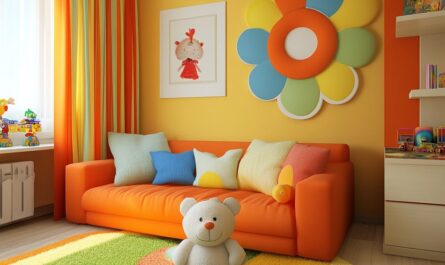The importance of zoning in a children’s room
Zoning a children’s room is not just a division of space, but an important step towards creating a comfortable and functional environment for the child. Properly designed areas help children develop independence skills while creating spaces for learning, relaxation and play. It is important that each zone has its own purpose and purpose, which makes the space more comfortable and safe.
In addition, zoning helps to organize the space so that it matches the child’s age and his needs. For younger children, the area for sleeping and playing should be one of the brightest and most active, and for schoolchildren it is worth paying attention to the organization of the study area. Zoning also helps reduce clutter and make the room more organized.
The main areas in the nursery: what should be in each
In a children’s room, there are several main zones: an area for sleeping, for playing, for studying and for storage. The sleeping area should be comfortable and cozy, providing the child with good rest. It is important that the bed is located in a safe place, away from windows and heating appliances.
The play area should be spacious and safe so that the child can move freely. Pay attention to game elements that develop physical activity and creative thinking. The study area should be designed to suit the needs of the student, including a table with good lighting, a chair, shelves for textbooks and stationery. The storage area should be designed so that the child can easily put away his things, while providing convenient access to toys and educational materials.
How to use furniture to zone space
Furniture is one of the most important tools for zoning a children’s room. It helps not only to divide the space into functional zones, but also makes it more convenient and practical. For example, to create an area for games and sleep, you can use double-sided shelves or cabinets that will provide storage and separate one area from another.
In addition, the use of furniture for zoning allows you to make the room multifunctional. Sliding partitions, beds with built-in drawers and multi-level shelving will help you use space efficiently without overloading it. It is important that the furniture is safe and easily accessible for the child, which contributes to the development of his independence.
The role of lighting in organizing space
Lighting plays an important role in organizing space in a children’s room. A variety of light sources help create the right atmosphere in each area. In the sleeping area, the light should be soft and calm, creating an atmosphere of comfort and peace. Bright and energetic light sources that stimulate activity are suitable for the play area.
The learning area requires high-quality lighting that will provide comfort to the child’s eyes. The best choice is a dimmable desk lamp. It is also worth paying attention to additional light sources, such as night lights or LED strips, which can become not only functional, but also decorative elements in the room.
Tips for choosing finishing materials for zones
The choice of finishing materials for a children’s room depends on which areas will be decorated in it. Easy-to-clean wallpaper that is not afraid of dirt and can be cleaned quickly is ideal for the play area. It is better to choose materials that do not contain toxic substances to ensure the safety of the child.
For the sleeping area, you can choose calmer and warmer materials, such as soft carpets and curtain fabrics. It is important to remember that the finish must be durable and wear-resistant, since a children’s room is a place where a child actively spends time. In the study area, you can use more neutral and practical finishing materials that will not distract from the educational process.
Examples of successful solutions for zoning a children’s room
Organizing space in a children’s room requires taking into account various factors, including the child’s age, his needs and interests. To create effective zoning, it is important to rely on specific examples that can be adapted to the individual characteristics of the family and child. We will look at several solutionstions that can help in properly dividing space.
- Using furniture with zoning function
For example, you can use a bed with built-in storage drawers that divides the space into a sleeping area and a play area. This approach not only saves space, but also makes the room more organized. - Dividing space with partitions
In small children’s rooms, you can use mobile partitions or bookshelves to create visual divisions. This helps create areas for play, study and relaxation without overcrowding the space. - Bright accents for each zone
Zoning can be complemented by accents on the floor or walls, for example, carpets, wallpaper or color accents that highlight functional areas. This not only makes the space more interesting, but also helps the child navigate his room easier. - Multi-level structures
For small rooms, multi-level beds are ideal, under which you can arrange a play area or work area. Such solutions allow you to rationally use vertical space without taking up extra space. - Use of lightweight and safe materials
When zoning, it is important to choose materials that are easy to clean and safe for children. These can be soft carpets in the play area, safe and durable wall and floor coverings.
In conclusion, good luckThe correct zoning of a children’s room depends on the right decisions and taking into account all the needs of the child. Using a variety of furniture elements, partitions and functional accents, you can create a space that will be comfortable, safe and interesting for your child.
Questions and answers
Answer 1: Zoning helps create a comfortable and functional space that takes into account the various needs of the child, such as rest, play and study.
Answer 2: The main areas are the area for sleeping, playing, studying and storing.
Answer 3: Furniture helps to divide the space into functional zones, for example, using partitions, shelving and cabinets.
Answer 4: Lighting helps create the right atmosphere in each area, providing comfort and safety.
Answer 5: For a children’s room, choose safe, easy-to-clean and wear-resistant materialsly suitable for each zone.



